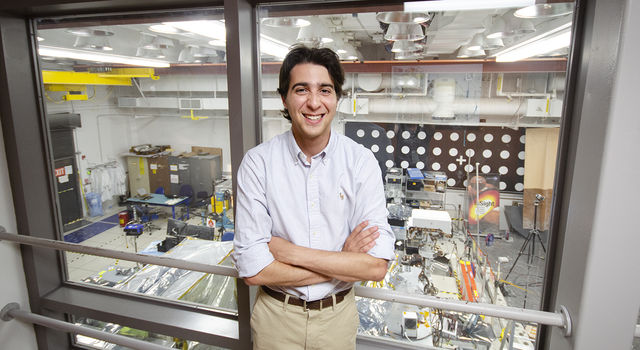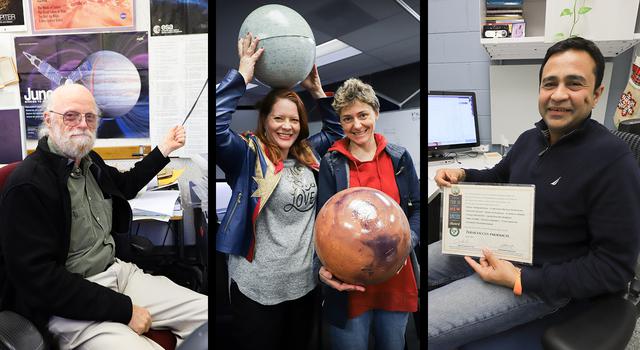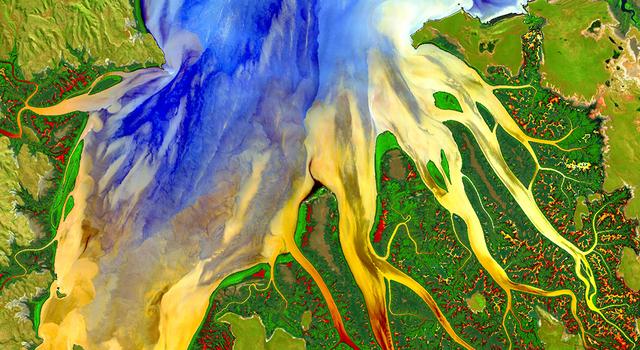Teachable Moments| January 23, 2020
NASA Says Goodbye to Space Telescope Mission That Revealed the Hidden Universe
In the News
On Jan. 30, 2020, the venerable Spitzer Space Telescope mission will officially come to an end as NASA makes way for a next-generation observatory. For more than 16 years, Spitzer has served as one of NASA’s four Great Observatories, surveying the sky in infrared. During its lifetime, Spitzer detected planets and signs of habitability beyond our solar system, returned stunning images of regions where stars are born, spied light from distant galaxies formed when the universe was young, and discovered a huge, previously-unseen ring around Saturn. Read on to learn more about this amazing mission and gather tools to teach your students that there truly is more than meets the eye in the infrared universe!
How It Worked
Human eyes can see only the portion of the electromagnetic spectrum known as visible light. This is because the human retina can detect only certain wavelengths of light through special photoreceptors called rods and cones. Everything we see with our eyes either emits or reflects visible light. But visible light is just a small portion of the electromagnetic spectrum. To "see" things that emit or reflect other wavelengths of light, we must rely on technology designed to sense those portions of the electromagnetic spectrum. Using this specialized technology allows us to peer into space and observe objects and processes we wouldn’t otherwise be able to see.

This diagram shows wavelengths of light on the electromagnetic spectrum and how they're used for various applications. Image credit: NASA | + Expand image
Infrared is one of the wavelengths of light that cannot be seen by human eyes. (It can sometimes be felt by our skin as heat if we are close enough to a strong source.) All objects that have temperature emit many wavelengths of light. The warmer they are, the more light they emit. Most things in the universe are warm enough to emit infrared radiation, and that light can be seen by an infrared-detecting telescope. Because Earth’s atmosphere absorbs most infrared radiation, infrared observations of space are best conducted from outside the planet's atmosphere.
Learn more about the infrared portion of the electromagnetic spectrum and how NASA uses it to explore space. Credit: NASA/JPL-Caltech | Watch on YouTube
So, to get a look at space objects that were otherwise hidden from view, NASA launched the Spitzer Space Telescope in 2003. Cooled by liquid helium and capable of viewing the sky in infrared, Spitzer launched into an Earth-trailing orbit around the Sun, where it became part of the agency's Great Observatory program along with the visible-light and near-infrared-detecting Hubble Space Telescope, Compton Gamma-Ray Observatory and Chandra X-ray Observatory. (Keeping the telescope cold reduces the chances of heat, or infrared light, from the spacecraft interfering with its astronomical observations.)
Over its lifetime, Spitzer has been used to detect light from objects and regions in space where the human eye and optical, or visible-light-sensing, telescopes may see nothing.
Why It's Important
NASA's Spitzer Space Telescope has returned volumes of data, yielding numerous scientific discoveries.
Vast, dense clouds of dust and gas block our view of many regions of the universe. Infrared light can penetrate these clouds, enabling Spitzer to peer into otherwise hidden regions of star formation, newly forming planetary systems and the centers of galaxies.
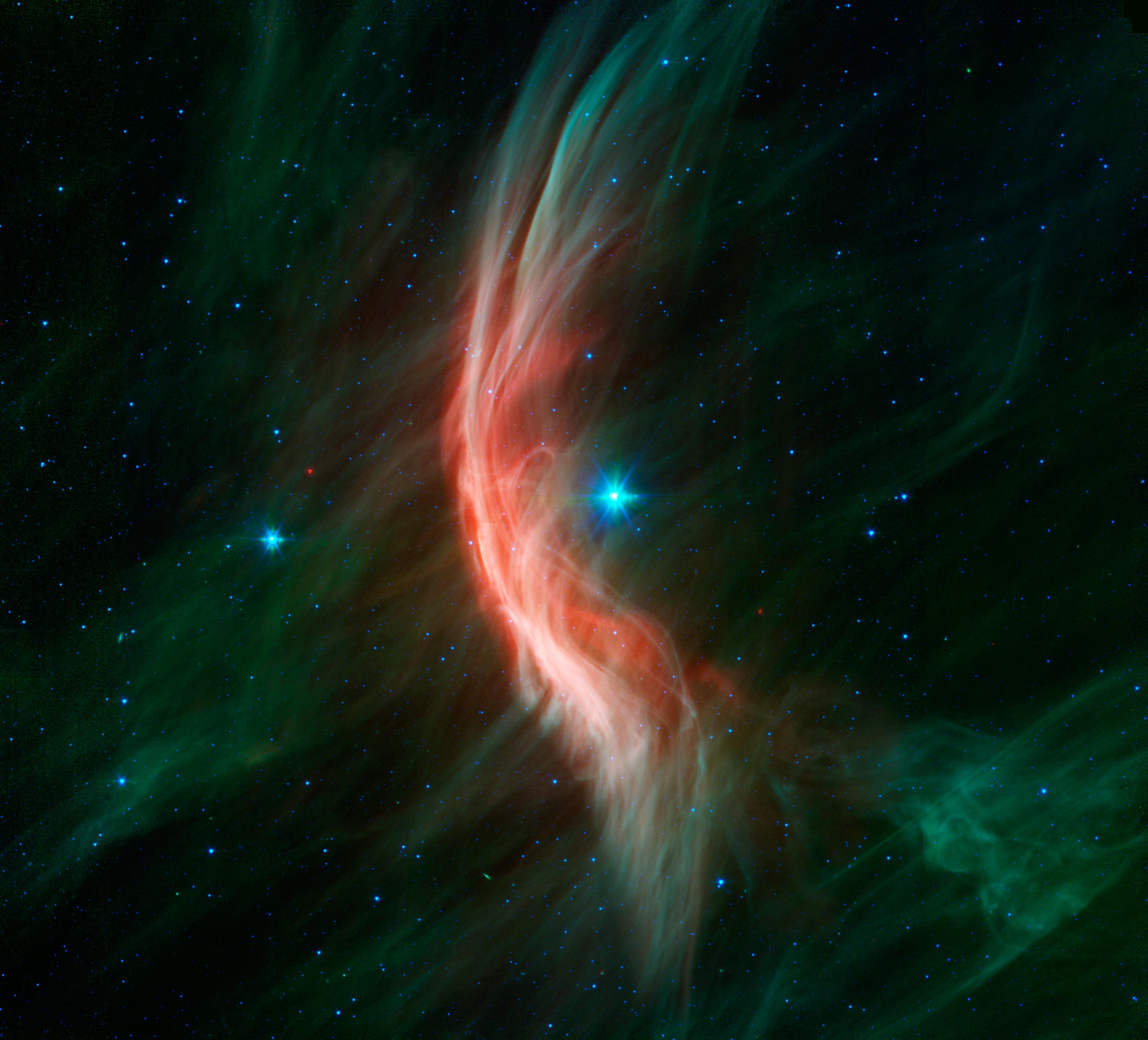
The bow shock, or shock wave, in front of the giant star Zeta Ophiuchi shown in this image from Spitzer is visible only in infrared light. The bow shock is created by winds that flow from the star, making ripples in the surrounding dust. Image credit: NASA/JPL-Caltech | › Full image and caption
Infrared astronomy also reveals information about cooler objects in space, such as smaller stars too dim to be detected by their visible light, planets beyond our solar system (called exoplanets) and giant molecular clouds where new stars are born. Additionally, many molecules in space, including organic molecules thought to be key to life's formation, have unique spectral signatures in the infrared. Spitzer has been able to detect those molecules when other instruments have not.
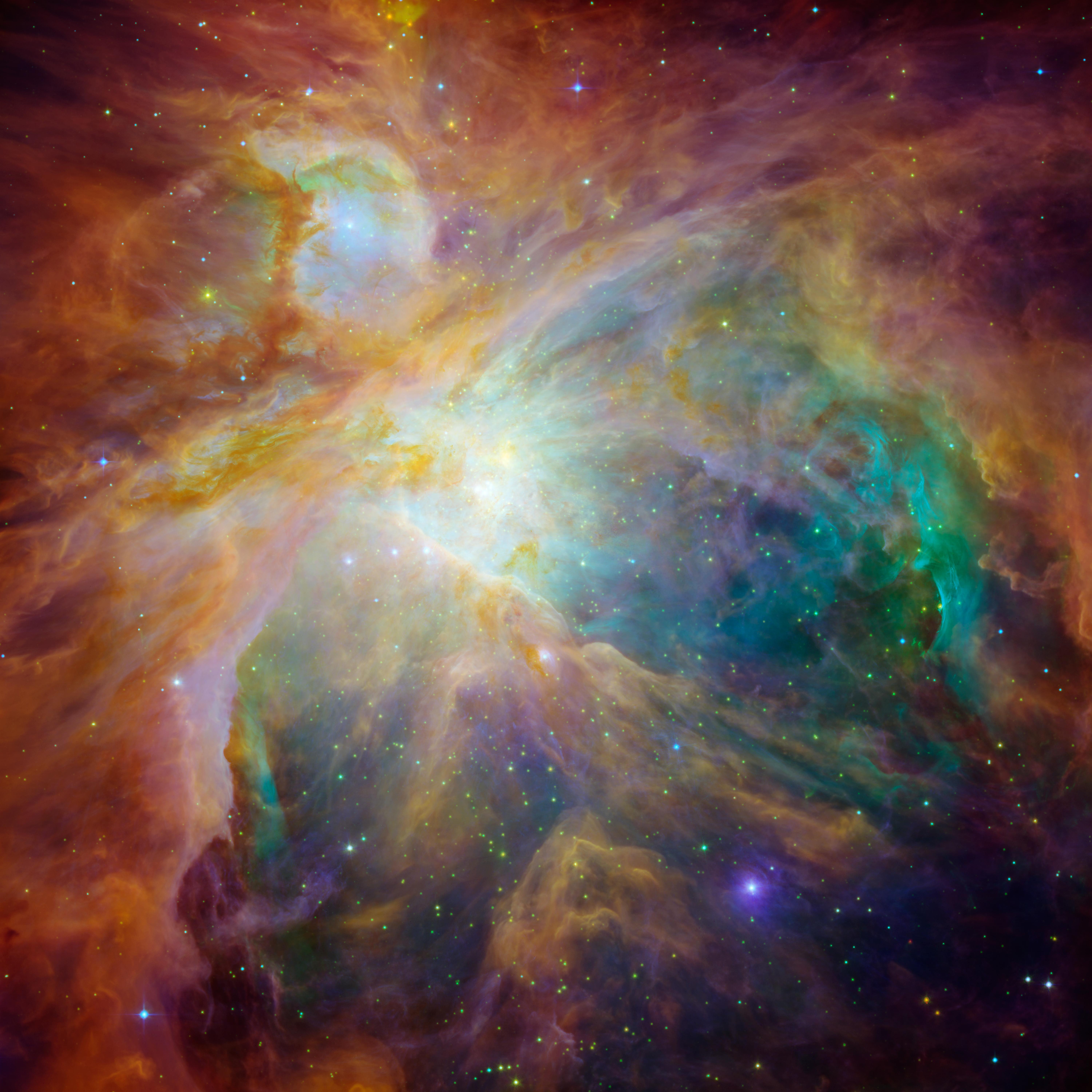
Both NASA's Spitzer and Hubble space telescopes contributed to this vibrant image of the Orion nebula. Spitzer's infrared view exposed carbon-rich molecules, shown in this image as wisps of red and orange. Image credit: NASA/JPL-Caltech/T. Megeath (University of Toledo) & M. Robberto (STScI) | › Full image and caption
Stars are born from condensing clouds of dust and gas. These newly formed stars are optically visible only once they have blown away the cocoon of dust and gas in which they were born. But Spitzer has been able to see infant stars as they form within their gas and dust clouds, helping us learn more about the life cycles of stars and the formation of solar systems.
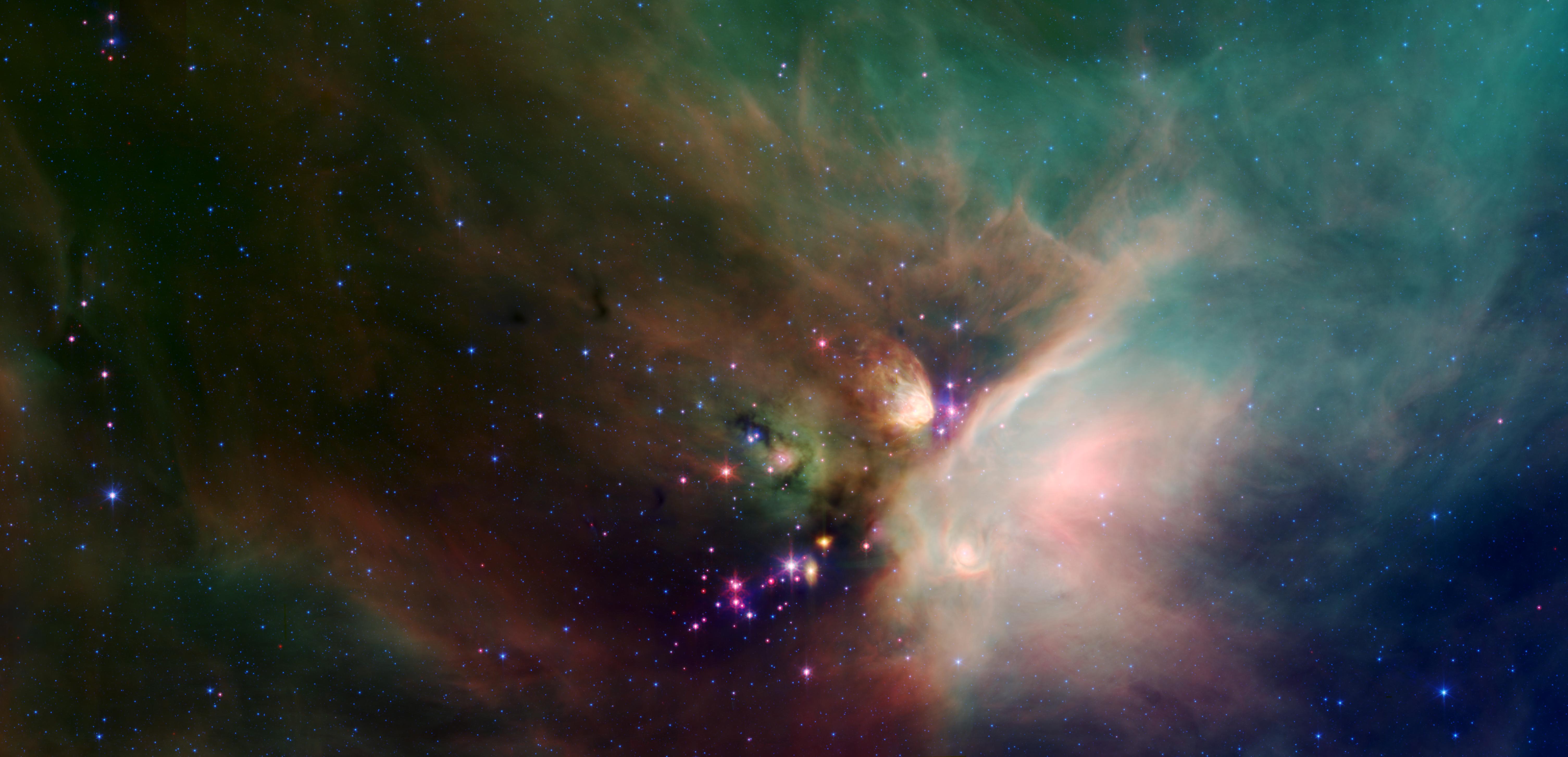
Newborn stars peek out from beneath their natal blanket of dust in this dynamic image of the Rho Ophiuchi dark cloud from Spitzer. The colors in this image reflect the relative temperatures and evolutionary states of the various stars. The youngest stars are shown as red while more evolved stars are shown as blue. Image credit: NASA/JPL-Caltech/Harvard-Smithsonian CfA | › Full image and caption
Infrared emissions from most galaxies come primarily from stars as well as interstellar gas and dust. With Spitzer, astronomers have been able to see which galaxies are furiously forming stars, locate the regions within them where stars are born and pinpoint the cause of the stellar baby boom. Spitzer has given astronomers valuable insights into the structure of our own Milky Way galaxy by revealing where all the new stars are forming.
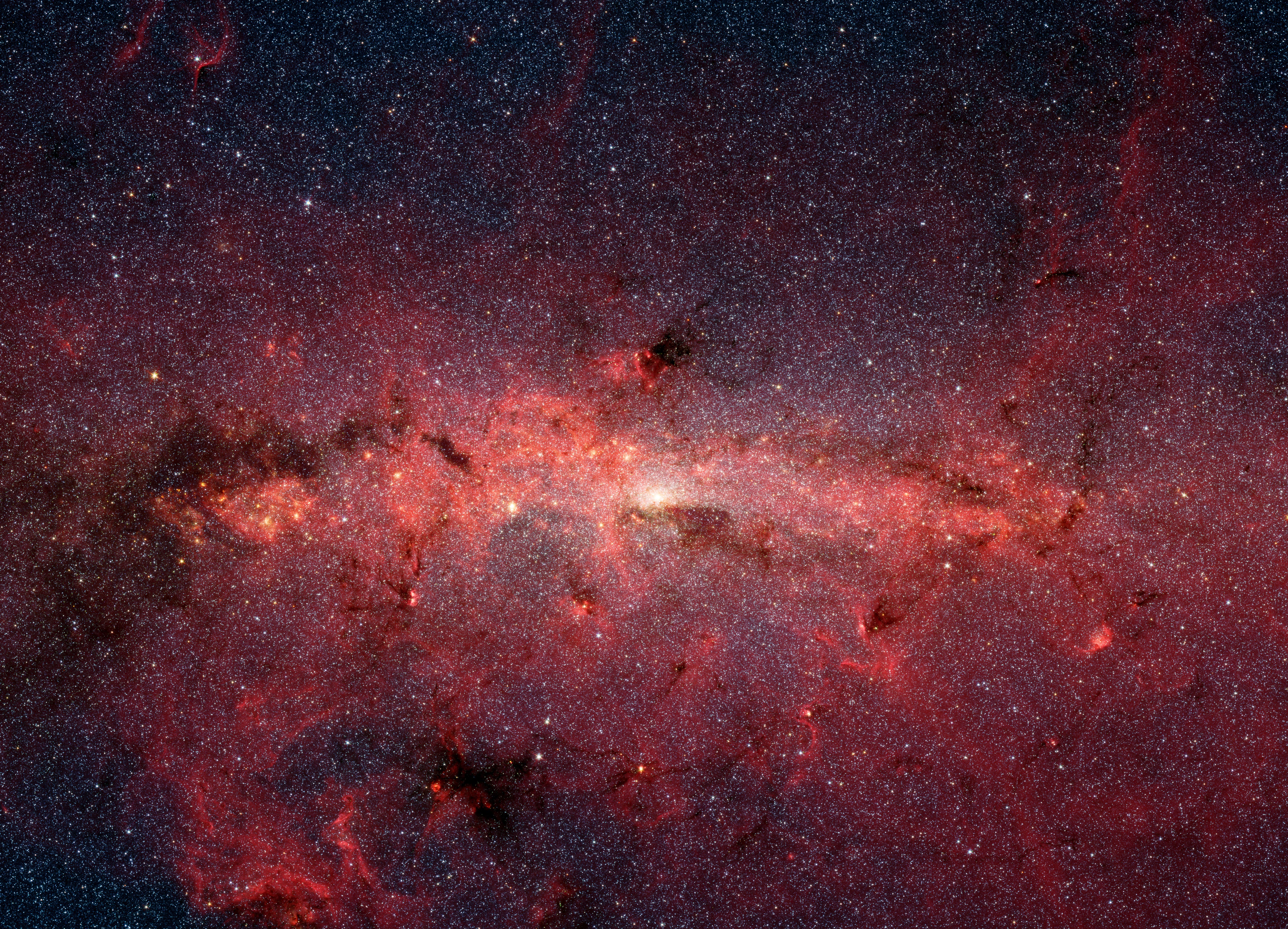
This Spitzer image, which covers a horizontal span of 890 light-years, shows hundreds of thousands of stars crowded into the swirling core of our spiral Milky Way galaxy. In visible-light pictures, this region cannot be seen at all because dust lying between Earth and the galactic center blocks our view. Image credit: NASA/JPL-Caltech | › Full image and caption
Spitzer marked a new age in the study of planets outside our solar system by being the first telescope to directly detect light emitted by these so-called exoplanets. This has made it possible for us to directly study and compare these exoplanets. Using Spitzer, astronomers have been able to measure temperatures, winds and the atmospheric composition of exoplanets – and to better understand their potential habitability. The discoveries have even inspired artists at NASA to envision what it might be like to visit these planets.

Thanks to Spitzer, scientists are learning more and more about planets beyond our solar system. These discoveries have even inspired a series of posters created by artists at NASA, who imagined what future explorers might encounter on these faraway worlds. Image credit: NASA/JPL-Caltech | › Download posters
Data collected by Spitzer will continue to be analyzed for decades to come and is sure to yield even more scientific findings. It's certainly not the end of NASA's quest to get an infrared window into our stellar surroundings. In the coming years, the agency plans to launch its James Webb Space Telescope, with a mirror more than seven times the diameter of Spitzer's, to see the universe in even more detail. And NASA's Wide Field Infrared Survey Telescope, or WFIRST, will continue infrared observations in space with improved technology. Stay tuned for even more exciting infrared imagery, discoveries and learning!
Teach It
Use these lessons, videos and online interactive features to teach students how we use various wavelengths of light, including infrared, to learn about our universe:
- Lessons: Cool Cosmos Infrared Lessons
- Website: Cool Cosmos Infrared Primer
- Materials: Infrared Posters and Printouts
Explore More
- Article: NASA Celebrates the Legacy of the Spitzer Space Telescope
- Website: Spitzer Space Telescope Mission
- Video: Spitzer Final Voyage VR 360
- Video: Science in a Minute: The Art of Spitzer Space Telescope
- Images: Spitzer Zoomable Images
- Participate: NASA/IPAC Teacher Archive Research Program
Also, check out these related resources for kids from NASA’s Space Place:
TAGS: Teachable Moments, science, astronomy, K-12 education, teachers, educators, parents, STEM, lessons, activities, Spitzer, Space Telescope, Missions, Spacecraft, Stars, Galaxies, Universe, Infrared, Wavelengths, Spectrum, Light





